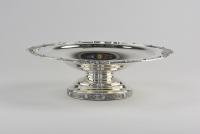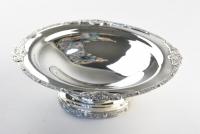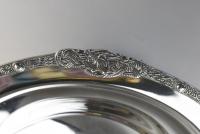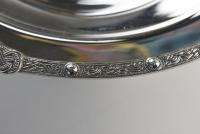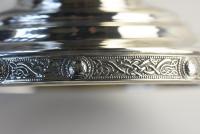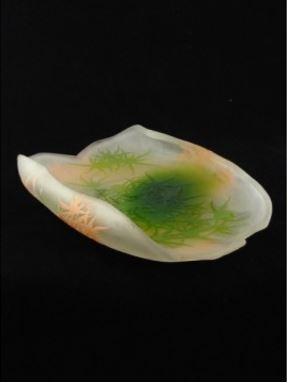
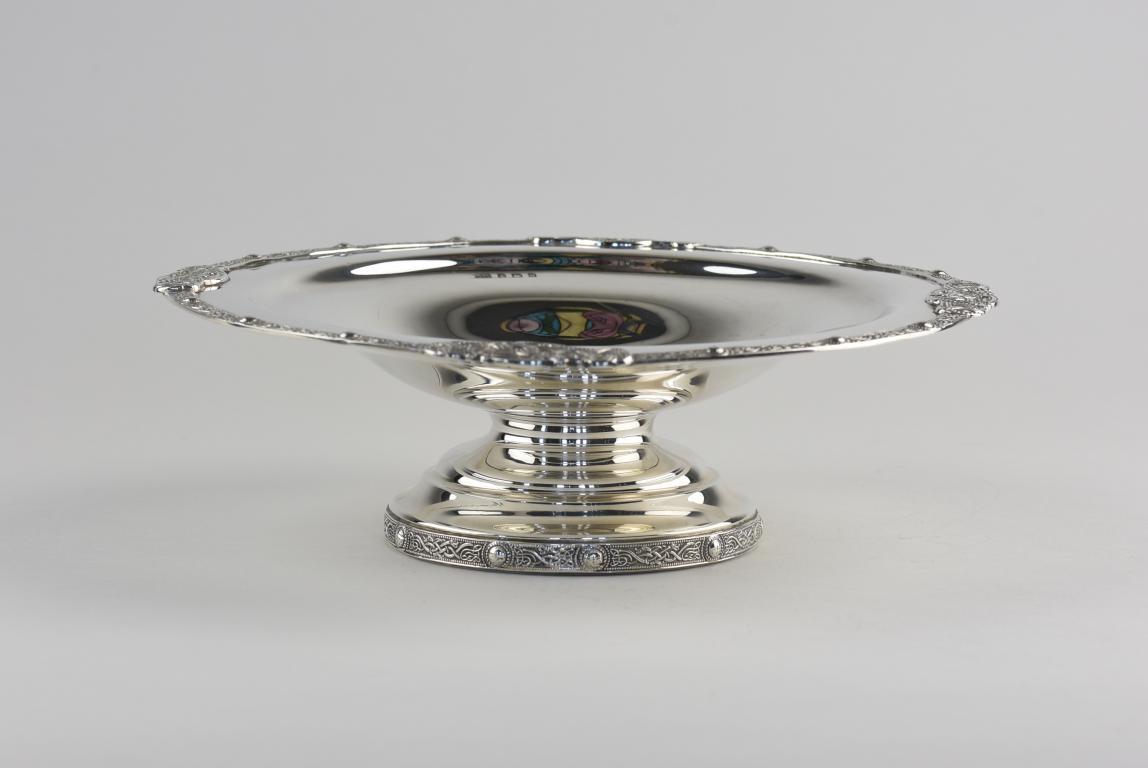
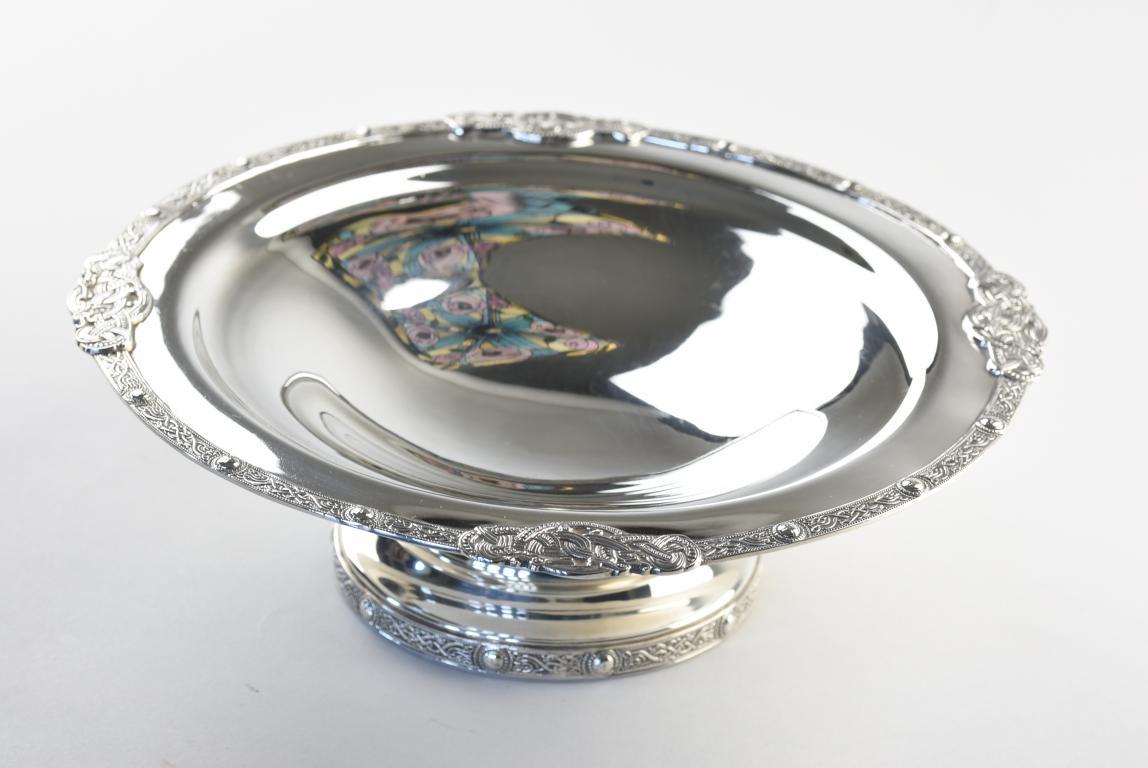
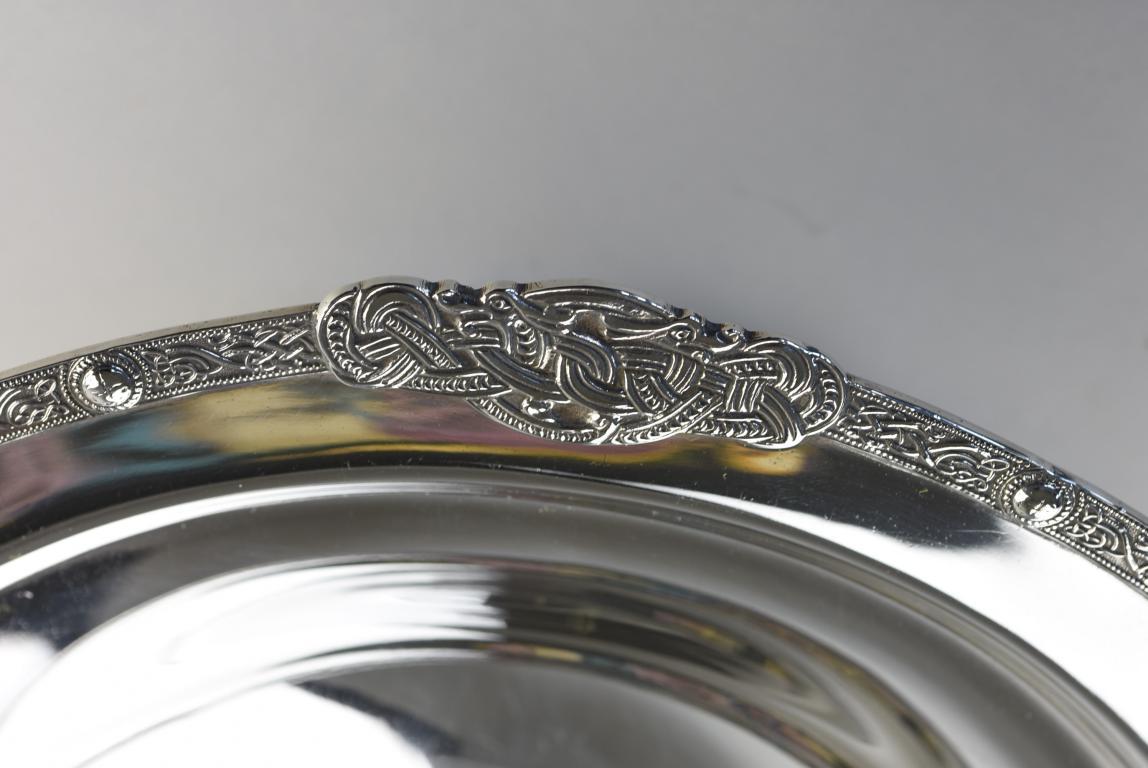
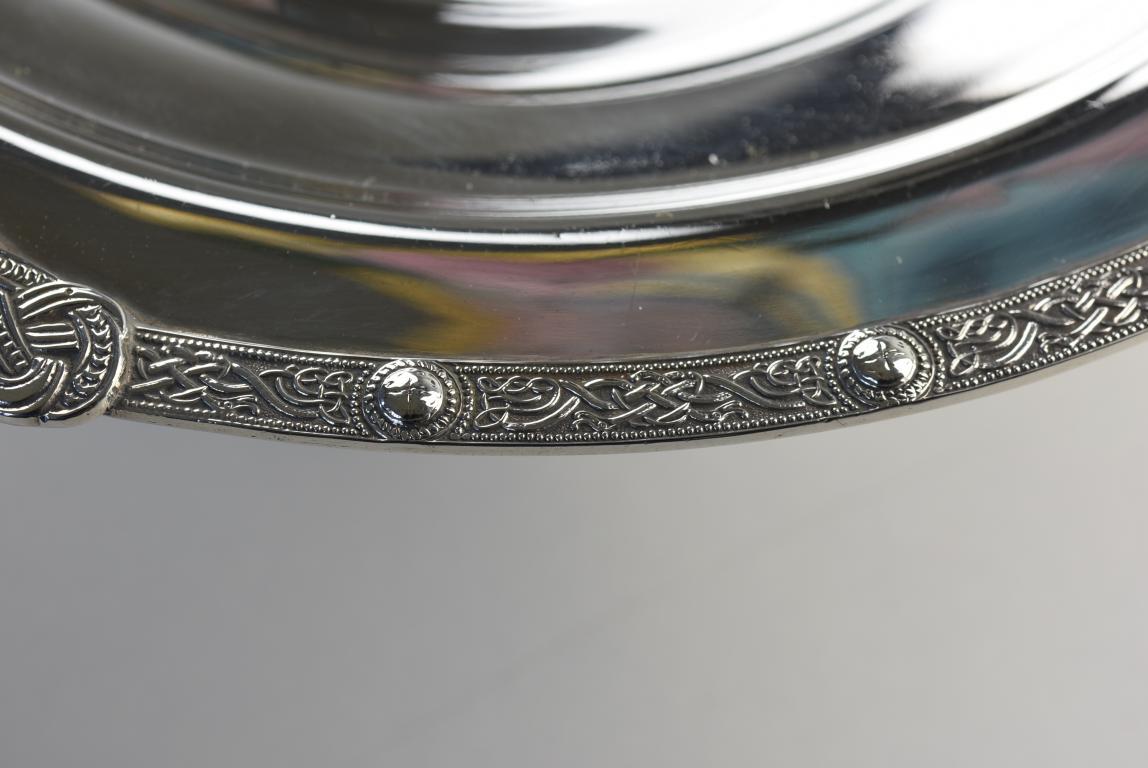
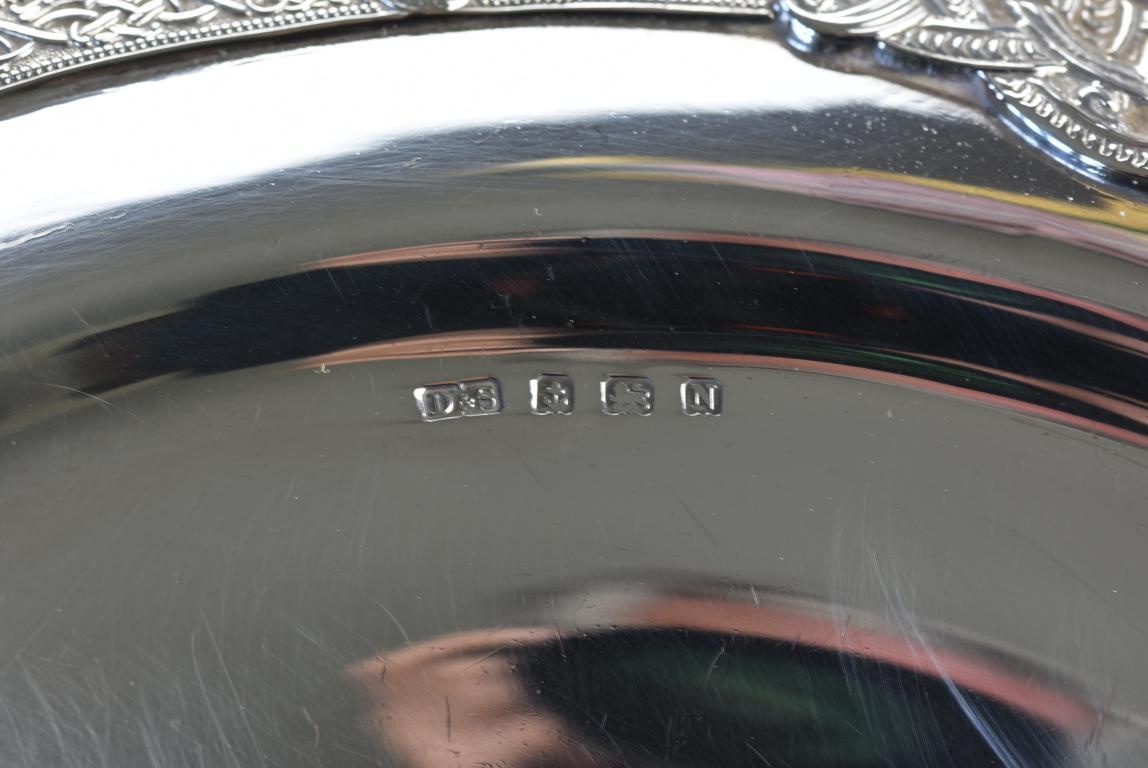
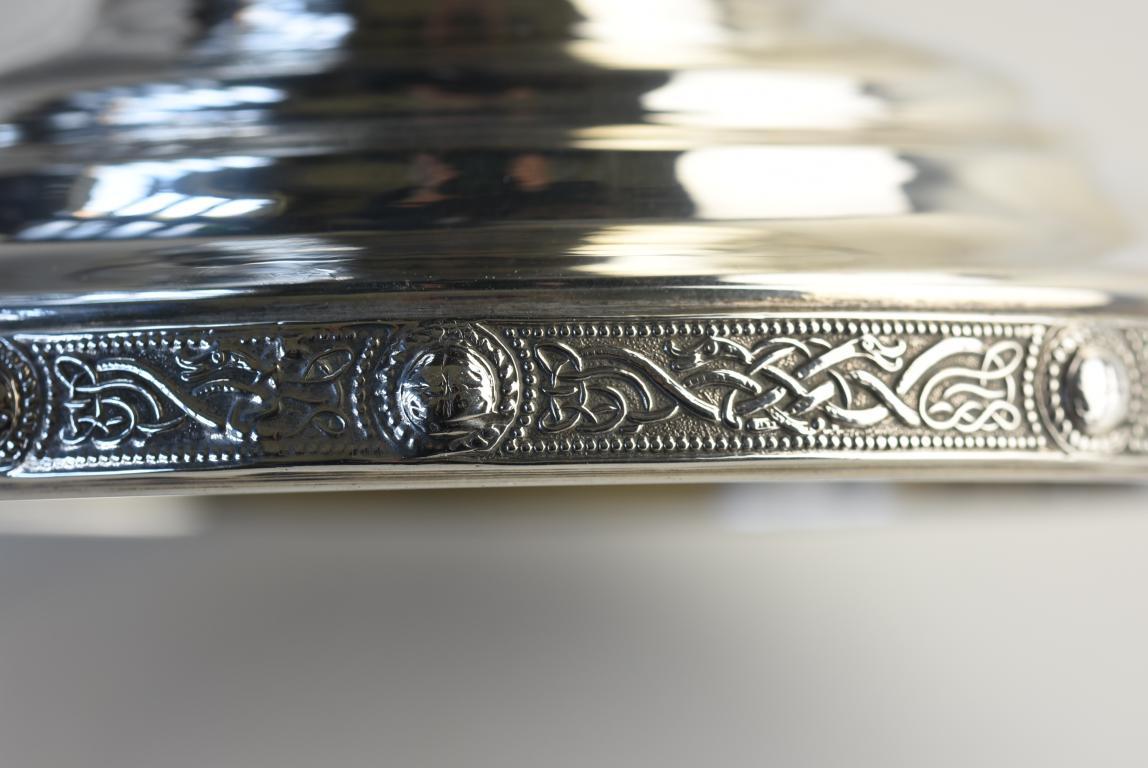
Price
£725.00This object is eligible for a Certificate of BADA Provenance
The BADA Standard
- Since 1918, BADA has been the leading association for the antiques and fine art trade
- Members are elected for their knowledge, integrity and quality of stock
- Our clients are protected by BADA’s code of conduct
- Our dealers’ membership is reviewed and renewed annually
- Bada.org is a non-profit site: clients deal directly with members and they pay no hidden fees
Arts and Crafts silver tazza. Beautifully decorated border in the Celtic Revival style with entrelac decoration showing entwined dragons . There are four applied panels of more detailed entrelac decoration. The tazza is raised above a spreading pedestal foot with more entrelac decoration.
A very finely detailed and chased piece of silver. Hallmarked Duncan and Scobie Birmingham 1937. Approximate weight 16.5 ounces
History
The Celtic Revival (also referred to as the Celtic Twilight, or Celtomania) was a variety of movements and trends in the 19th and 20th centuries that saw a renewed interest in aspects of Celtic culture. Artists and writers drew on the traditions of Gaelic literature, Welsh-language literature, and so-called ‘Celtic art’—what historians call Insular art (the Early Medieval style of Ireland and Britain).
Although the revival was complex and multifaceted, occurring across many fields and in various countries in Northwest Europe, its best known incarnation is probably the Irish Literary Revival. Irish writers including William Butler Yeats, Lady Gregory, “AE” Russell, Edward Martyn, Alice Milligan. and Edward Plunkett (Lord Dunsany) stimulated a new appreciation of traditional Irish literature and Irish poetry in the late 19th and early 20th century.
The Arts and Crafts movement was an international movement in the decorative and fine arts that began in Britain and flourished in Europe and North America between about 1880 and 1920. It stood for traditional craftsmanship using simple forms, and often used medieval, romantic, or folk styles of decoration.
The movement had an “extraordinary flowering” in Scotland where it was represented by the development of the ‘Glasgow Style’ which was based on the talent of the Glasgow School of Art. Structured more by a set of ideals than a prescriptive style, the Movement took its name from the Arts and Crafts Exhibition Society, a group founded in London in 1887 that had as its first president the artist and book illustrator Walter Crane.
The Society’s chief aim was to assert a new public relevance for the work of decorative artists (historically they had been given far less exposure than the work of painters and sculptors)
Date Hallmarked Duncan and Scobie Birmingham 1937
Condition Excellent original condition.
Dimensions
Approximate width 23.5 cm height 7cmStock number
2337The BADA Standard
- Since 1918, BADA has been the leading association for the antiques and fine art trade
- Members are elected for their knowledge, integrity and quality of stock
- Our clients are protected by BADA’s code of conduct
- Our dealers’ membership is reviewed and renewed annually
- Bada.org is a non-profit site: clients deal directly with members and they pay no hidden fees


